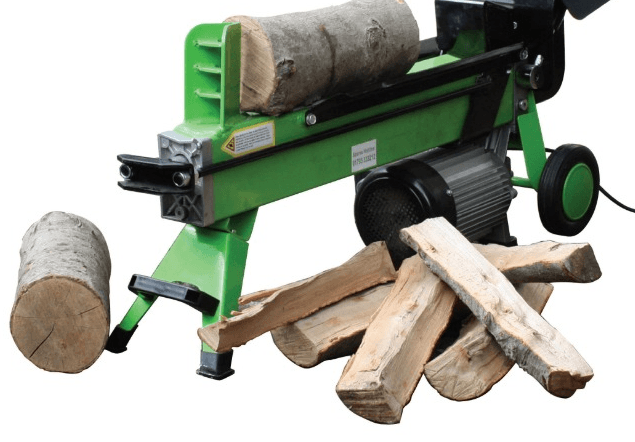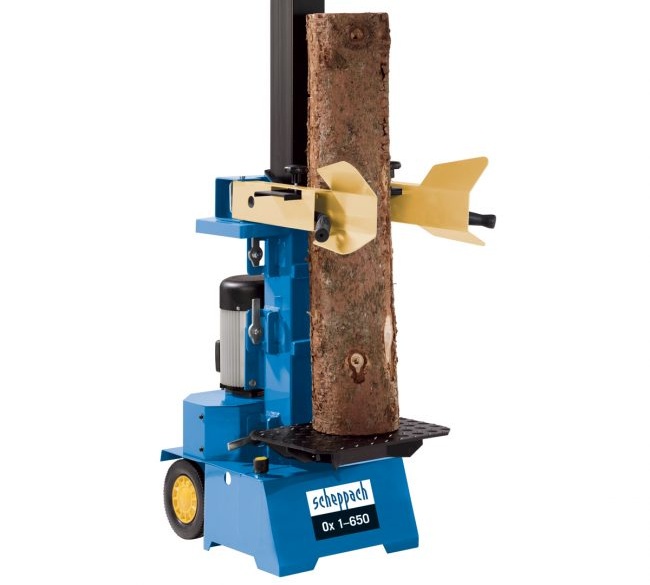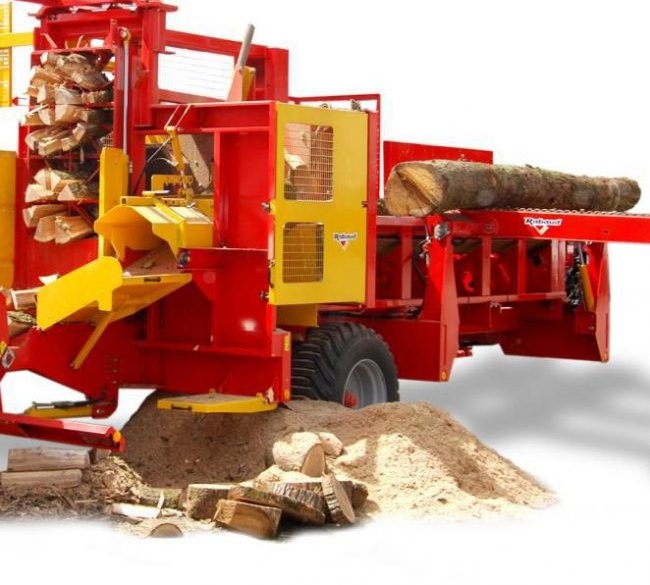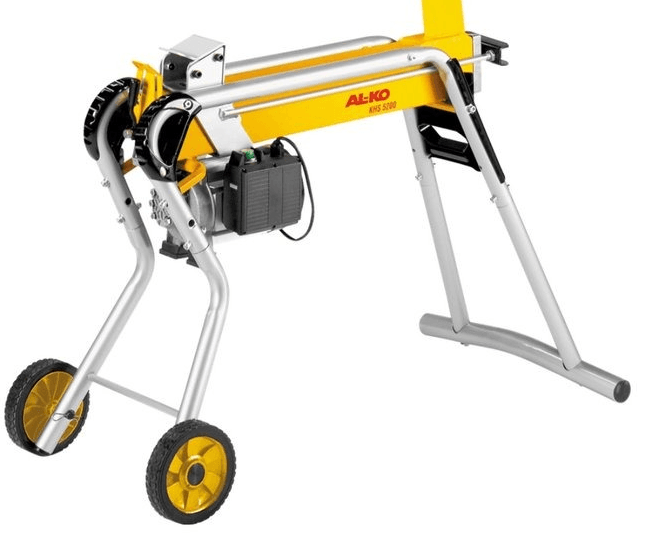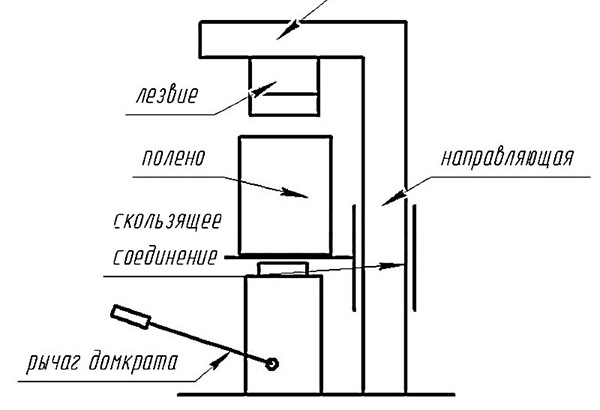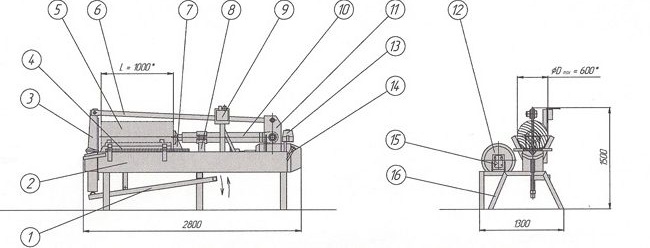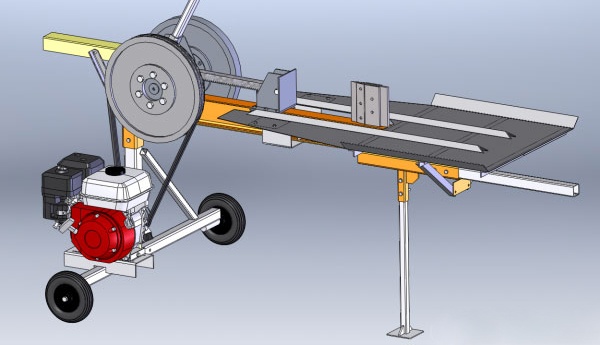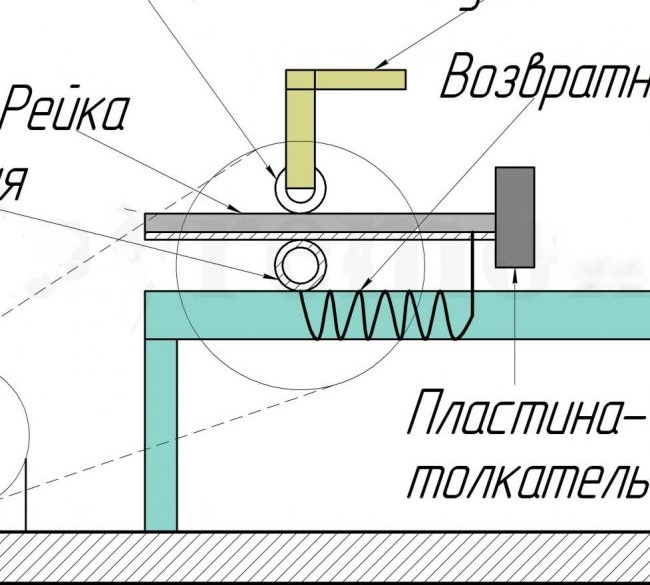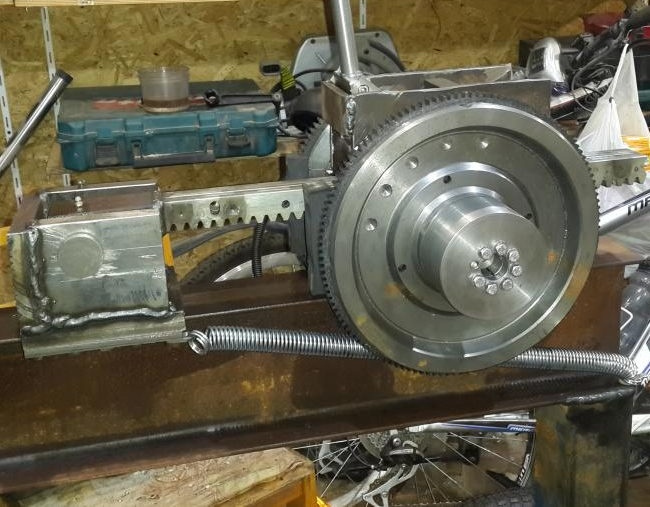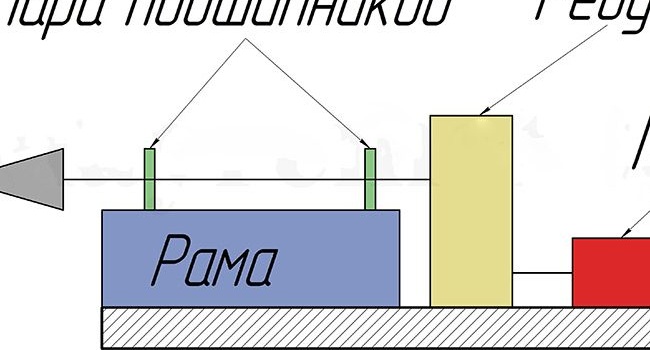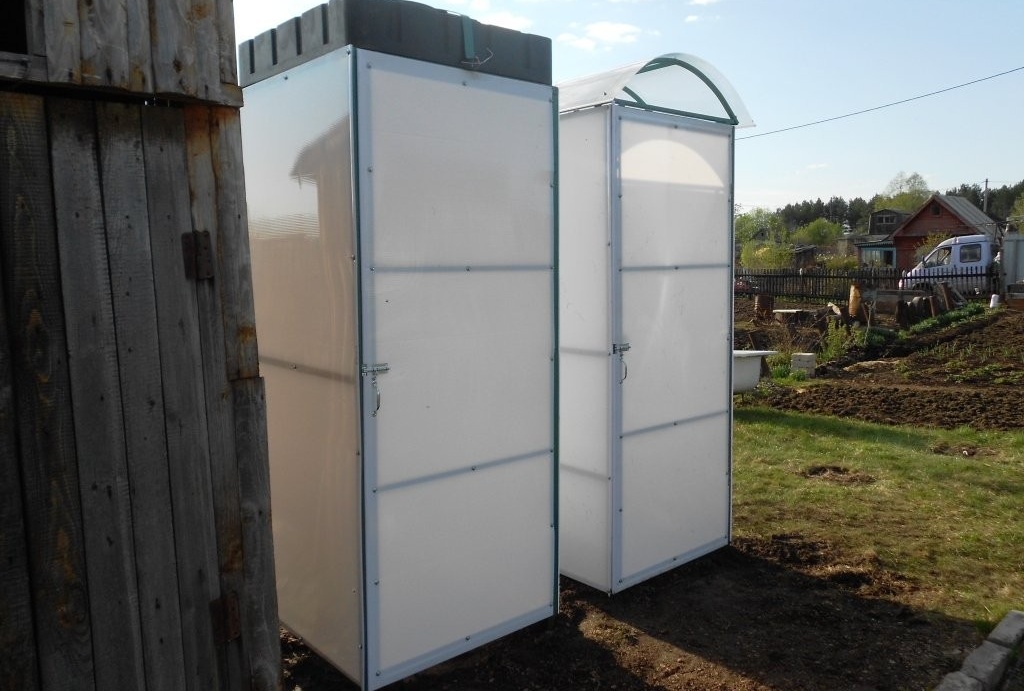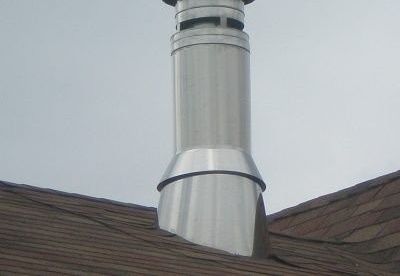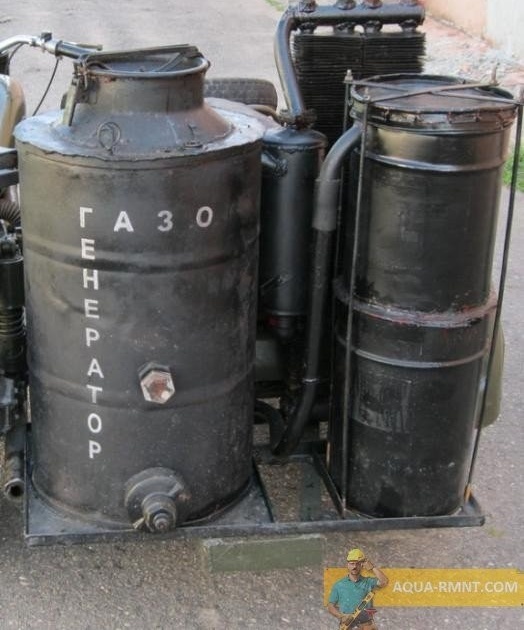DIY wood splitter
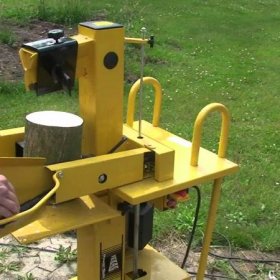
Hand chopping firewood is a difficult and tedious task, which can be facilitated by using various types of special equipment, including modern or home-made wood splitters. Do-it-yourself wood splitter is a necessary and affordable device, which greatly facilitates the independent preparation of firewood.
Content
What is a splitter, the history of the device and its purpose
Log splitter (eng. Logsplitter) - a machine that is designed to chop wood. This type of tool is often referred to as a wood splitter, splitter or firewood chopper. At the same time, wood splitters also cut wood and split them into separate logs.
The first mechanisms for chopping wood appeared in Europe in the 16th century. They were acquired by the owners of large industrial enterprises in order to create thermal energy. Replacing traditional manual labor helped to make firewood faster. Since then, engineers have created several types of wood splitting machines, which differ primarily in the principle of operation.
Small volumes of firewood were handled by ordinary mechanical wood choppers, which were distinguished by their simplicity of construction and the minimum number of complex units. The simplest mechanical splitters resembled an ordinary well crane, but instead of a bucket, a cutter with handles was fixed in this design. The strut and crossbars were articulated using good lubricant. The principle of operation of this design is intuitive and involved the installation of a block on a stand with a sharp pulling of the lever down. The inertia of the cutter was gaining considerable strength, due to which the block of wood split up, and the whole process was repeated until the log of the required thickness was obtained.
Modern wood splitters are most often hydraulic devices and are widely used for quick and easy cutting of logs. The main advantage of operating any modern wood splitter is the highest possible security, which is why gasoline or electric-type splitters are many times more superior than the ax that has already become traditional.
General classification
All types of wood splitters differ in the method of stacking logs, volumes of processed wood, mobility and type of drive.
Horizontal
In horizontal models, the log is laid inside the horizontal gutter, after which the stacked element is pushed towards the knife. In some tools, the log can lie motionless inside the gutter, and the knife itself moves in its direction. Horizontal models can be on short legs (desktop) and on long (for full-length work).
Vertical
In vertical models, the log is mounted vertically, and a knife is pushed from above by means of a hydraulic cylinder. The efficiency of this machine is higher than that of horizontal models, due to the lack of movement of the log during the split without creating additional friction. Nevertheless, working with crookedly sawn off elements requires their manual retention, which goes against the safety procedures for the operation of this equipment.
Industrial
Industrial wood splitters, most often equipped with an electric motor, are used with a 220 or 380 V motor with a power of 3 kW or more.
Household wood splitters
Household models are characterized by maximum structural simplicity, utmost ease of use and absolute unpretentiousness in terms of service.
Types by type of drive
With an electric, gasoline engine, with a power take-off shaft or with a hydraulic system and a combined type of drive (by type of drive).
Stationary and mobile
The first version of such mechanisms, as a rule, is represented by massive industrial models or whole multifunctional machines. The operation of a stationary wood splitter in domestic conditions is most often completely inappropriate. Mobile or mobile models are equipped with transport wheels, which greatly facilitate the movement of the device to almost any place of work and are optimally suited for domestic use.
Classification of makeshift wood splitters
Self-made wood splitters can be mechanical and equipped with a conventional electric drive of hydraulic, rack and screw type. The cone and screw wood splitters are represented by the “screw” cone, which, when “drilled” into a wooden billet from the bark, splits it into pieces or so-called logs.
The rack-type firewood splitters split logs due to the impact of the rail with a tip into the end of the log. Hydraulic wood splitters function similarly to rack models, but the operation of the drive depends on the hydraulic pump, and is designed to handle large, knotted log blocks. It is important to remember that hydraulic models have significant power indicators, respectively, and it is more difficult to make them yourself than simpler cone structures.
Mechanical
This version of the device is quite simple to manufacture with your own hands and subsequent operation. The most successful options are presented by units arranged on the basis of the lever principle, including models supplemented by a spring, and inertial devices based on a pair of pipes with different diameters. The device operates using a return mechanism, and due to the presence of powerful return springs in the design, a very large splitter performance is provided with a quick return of the mechanism to its original position.
Electric powered
Electric powered wood splitters can have rack, hydraulic and screw versions.
The rack version is represented by the following elements:
- 1 - rotary mechanism for regulating the rise of the knife in height;
- 2 - tank hydroelectric station;
- 3 - knife hydraulic splitter;
- 4 - stationary tray;
- 5 - split workpiece;
- 6 - brace fixation in the upper part of the knife;
- 7 - moving thrust heel;
- 8 - support front hydraulic cylinder;
- 9 - a hydraulic distributor;
- 10 - a hydraulic cylinder;
- 11 - back support for a hydraulic cylinder;
- 12 - an electric motor;
- 13 - input device for an electric network;
- 14 - filler pipe of the hydraulic tank;
- 15 - an arm for a hydraulic pump;
- 16 - frame.
In the screw version of the splitter, the dimensions of the drill, as well as the optimal indicators of the tilt angle of the cone, which determine the maximum dimensions of the log to be broken, are selected individually or in accordance with the table values.
Table: screw type splitter parameters
| Cone type | Tilt angle | Length | Diameter | Split depth |
| 1,1 | 15 | 220 mm | 75 mm | 500 mm |
| 1,2 | 15 | 220 mm | 85 mm | 600 mm |
| 1,3 | 18 | 250 mm | 100 mm | 700 mm |
DIY Step-by-Step Instructions
Of course, the simplest and fastest in self-manufacturing is the mechanical type of tool, which does not need to use special components or any professional equipment. Nevertheless, the wood splitter with electric drive has wider application, it is practical and very convenient in operation.
Mechanical option
The most popular and easiest to do it yourself is the standard rack design.
- The choice of a ready-made scheme or independent preparation of the optimal version of the drawing for the manufactured design of the splitter.
-
The acquisition and preparation of all necessary materials for the manufacture of a wood splitter device.
-
Assembly of the bed and a stable supporting frame, made using a reliable channel, profile pipe or I-beam.
-
Installation of all structural parts with the installation of a push mechanism and, if necessary, various additional parts represented by a thermal relay and a protective sleeve.
-
As a cleaver in this type of device, it is strongly recommended to use a four-cutter type element.
Electric splitter
For the independent manufacture of the unit for chopping wood with an electric drive, the materials presented should be prepared:
- steel bed for fixing all installation elements;
- engine, the power of which is selected in accordance with individual needs;
- gross mechanism;
- reduction gear;
- threaded nozzle with thread.
Three types of motors can be used: collector, with electronic control or asynchronous, but the latter option is the most popular and common.
A simple but functional mechanism under the uncomplicated name “Carrot” is easily made independently and does not require the use of high-tech or too expensive parts. Self-production involves the preparation of a drive, a simple gearbox with a belt drive, a pair of bearings and a shaft, as well as a cone with threaded threads and a frame table.
A drive with power ratings of about 2 kW or more can be removed from any old washing machine, and the most difficult part of such a system is a cone, which is purchased ready-made or made to order. Quick and easy splitting of wood chocks occurs due to the process of screwing the cone into the wood fibers.
Less popular rack design, due to the increased level of danger during the operation of this device. In this case, the rail and the plate of the pusher should be placed on the carriage moving along the bed. Maximum attention will need to be paid to the stability of the frame, as well as the quality characteristics of the installed rail.
The operation of such a home-made design involves a very careful calculation of the speed of rotation of the gear, which transfers force to the rail. Most often, chopping wood blocks using such a splitter is easy and quick. The operator sets the device in motion when the rail is pressed against the gear. As a result of releasing the handle, the contact with the working gear decreases, due to the presence of a spring and the operation of the return mechanism.
Related videos
https://www.youtube.com/embed/Qrh8eHnFD7E https://www.youtube.com/embed/iIiiUqyiaGM https://www.youtube.com/embed/BZXmsj8Nlkg
Precautionary measures
Particular attention and increased caution requires working on electric models of a splitter:
- You can use a wood splitter only for its intended purpose;
- Before operation, you must carefully read the instructions;
- it is impossible to operate the wood splitter if there are third parties in the coverage area, especially children or animals;
- when working, special gloves, personal protective equipment for hearing and vision are used;
- Do not leave a running machine unattended;
- hands should be kept at a sufficient distance from the cutting mechanism;
- Before work, you need to make sure that all nodes are securely fixed;
- Service, repair or transport the wood splitter need to be turned off.
It is forbidden to split too large logs or logs with nails and other foreign objects that can cause damage to the device. Before operation, check the hydraulic system and make sure that there are no oil leaks.
Advantages and disadvantages of home-made and purchased models of wood splitters
Homemade wood splitters, as a rule, are noticeably inferior to factory settings, not only in terms of power, but also according to external data.
However, if it is necessary to process a small amount of wood in a home-made environment, do-it-yourself devices fit very well and have several advantages presented:
- low cost in comparison with professional machines;
- easy self assembly using the simplest materials;
- gaining experience in the manufacture of household appliances.
Nevertheless, in the process of self-assembly, all design features of the mechanism must be taken into account, therefore, along with the factory settings, all self-made wood splitters comply with the set of basic minimum requirements:
- standard minimum motor power - about 2 kW;
- manufacturing of all stationary and moving elements based on solid steel or sufficiently strong alloys;
- the minimum distance from the cone of the device to the floor is 80–90 cm;
- the number of revolutions for installation in household use is 400-500 per minute.
Wood splitters can not only be made independently, but also can be purchased ready-made in assembly. The principal difference is represented by price. The main advantage of such a factory assembly is that there is no need to spend time and effort on manufacturing, and the finished unit is safer to use. The dimensions of the installation are selected strictly individually, but the standard version of the wood splitter assumes compliance with the dimensions L / W / H at the level of 85/40/65 cm.
Table: Comparison of factory assembled firewood
| Model | A type | Safety and reliability | Power | Cost, rub) |
| Champion LSH5000 | electric (230 V) horizontal |
High | 2.2 kW | from 17 thousand |
| AL-KO KHS 5204 | electric (230 V) horizontal |
High | 2.2 kW | from 19 thousand |
| Texas 520 H | electric (220 V) horizontal |
High | 1,5 kW | from 20 thousand |
| Raptor t700 | electric (230 V) horizontal |
High | 2.2 kW | from 25 thousand |
| AL-KO KHS 3704 | electric (230 V) horizontal |
High | 1,5 kW | from 19 thousand |
| PROFI PLS 700E | electric (230 V) horizontal |
High | 2.3 kW | from 19.5 thousand |
| Texas 600VG | Petrol vertical |
High | 3,7 kW | from 55 thousand |
| CHAMPION LSV6000 | electric (230 V) vertical |
High | 2.7 kW | from 38 thousand |
| MTD LS 550 | Petrol vertical/ horizontal |
High | 5.5 kW | from 220 thousand |
As the practice of operation shows, a home-made wood splitting device can very well be configured for convenient operation and practical use, such a do-it-yourself design is much cheaper than finished and modern factory products.
If you have the necessary materials, you can do it yourself with one of the options for a simple mechanical wood splitter or equip such a device with an electric drive, which is the best option for working with a small amount of firewood.
